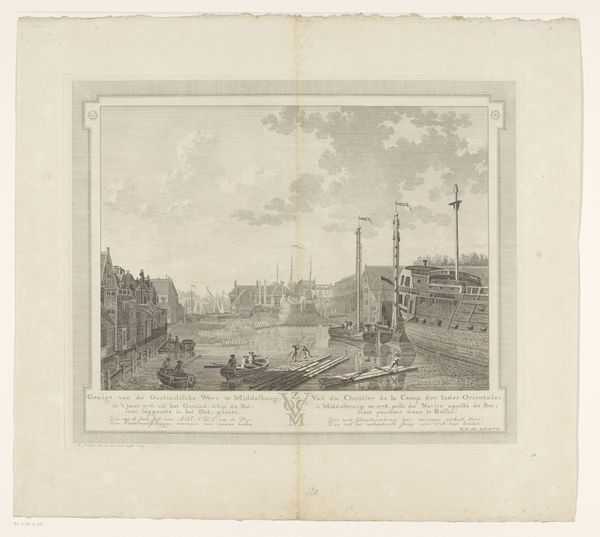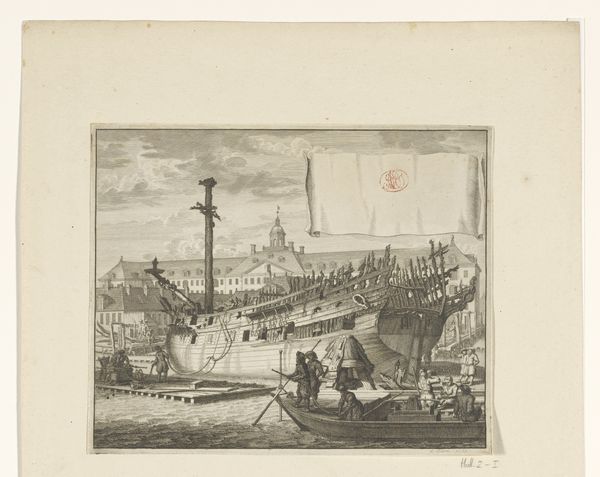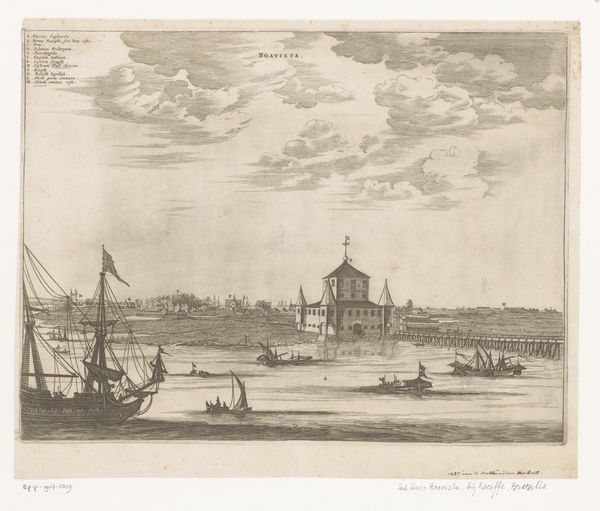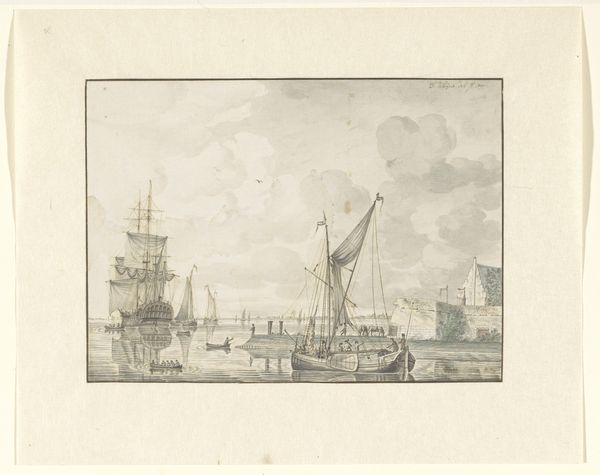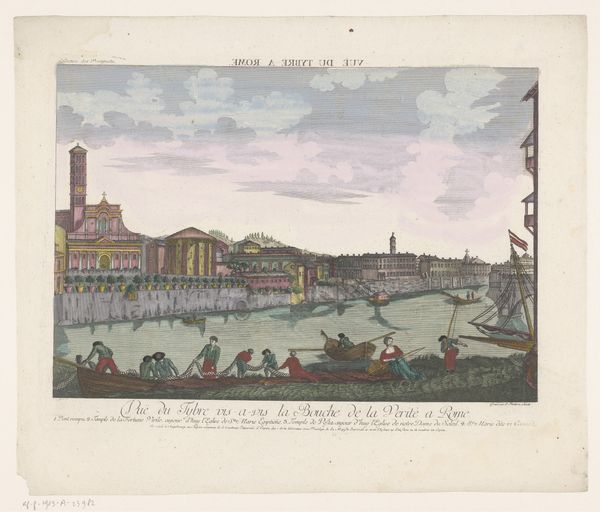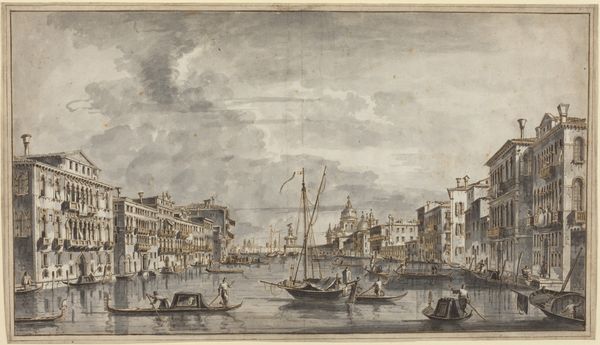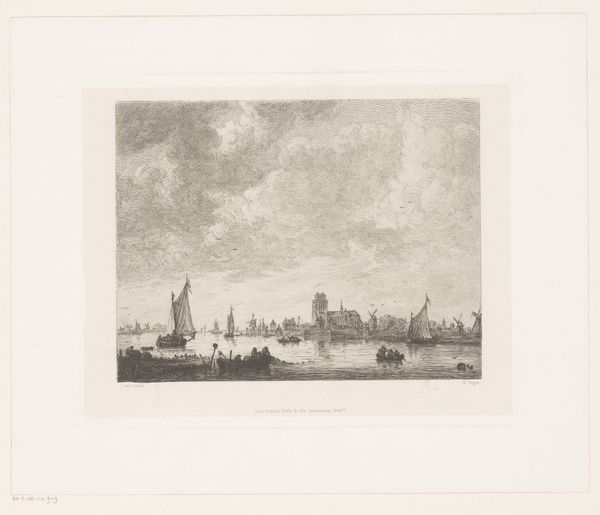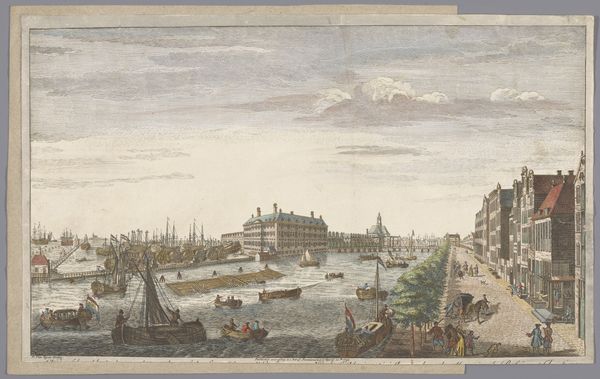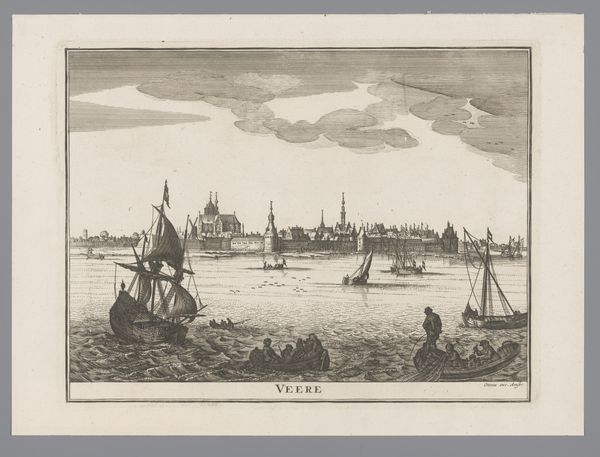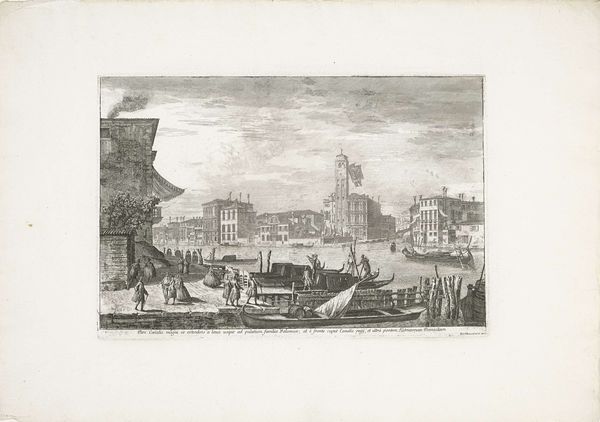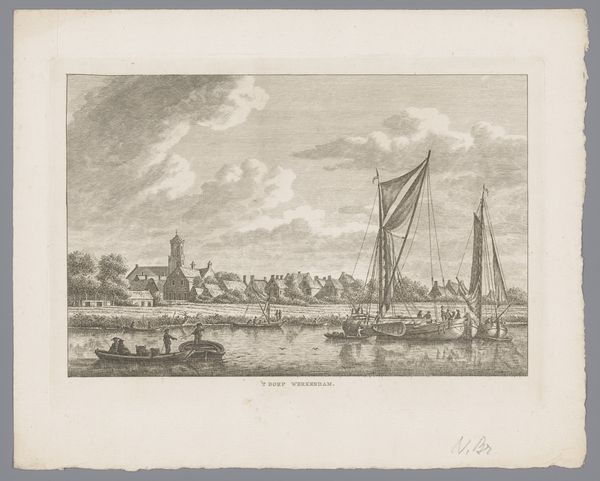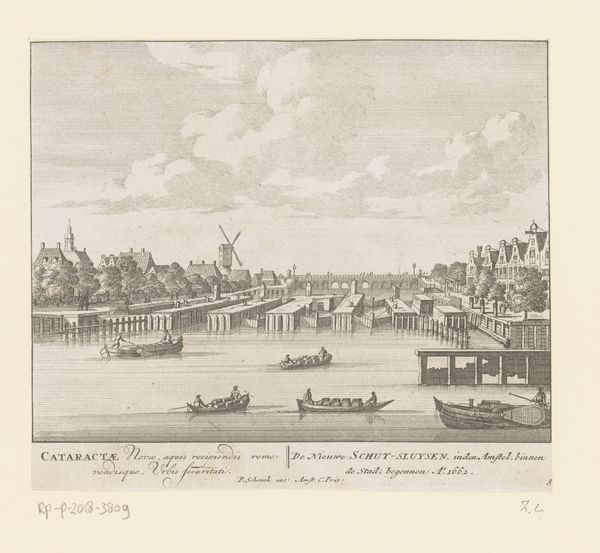
Dimensions: height 232 mm, width 294 mm
Copyright: Rijks Museum: Open Domain
Curator: This is a view captured between 1802 and 1837 by Antonio Bernatti, called "Gezicht op de Riva degli Schiavoni te Venetië" or "View of the Riva degli Schiavoni in Venice." It is a print—specifically, an engraving—depicting a Venetian cityscape. Editor: It's so delicate, almost ethereal. The pale tones give it a ghostly quality, a snapshot of a Venice that feels both familiar and distant. The details, despite being monochrome, are captivating, particularly the tiny figures along the waterfront. Curator: The scene captures the bustle of everyday life. Look at the placement of the Campanile, positioned deliberately within the city's architectural narrative, solidifying Venice's historical identity through visual cues. And note the prominent ship at left: what meaning can be ascribed to the fact that most of it is out of frame? Is Venice arriving or departing? Editor: Perhaps a comment on trade, or Venice's relationship to the broader world? The architecture and maritime activity signify both commerce and connection but on whose terms? Also the whiteness dominates and is maybe symbolic of a powerful ruling elite; certainly, any sign of ordinary people seems scarce in the vista, as does the diversity of their dress and activity. Curator: Indeed, and speaking of identity, even the rendering technique itself signifies Romanticism. The engraver emphasizes atmosphere through intricate lines, subtly idealizing the subject—tapping into viewers’ cultural memories and aspirations, and making the print desirable. Editor: This makes me consider who would have viewed this piece. Was it created to reinforce a particular narrative about Venice's power, beauty, and commercial vitality for a specific class or national group? What stories might it intentionally be obscuring? Whose Venice is it really representing? Curator: That’s the power of visual representation, isn't it? Images carry symbolic weight far beyond their literal content, actively participating in social and political discourses, which means any reading of such a seemingly innocent landscape scene also carries the burden of history and ideology. Editor: This engraving compels us to explore those historical burdens and to reimagine what Venice could mean—and who it could represent—today. It really prompts a consideration of visual culture's complicity in shaping perspectives.
Comments
No comments
Be the first to comment and join the conversation on the ultimate creative platform.
